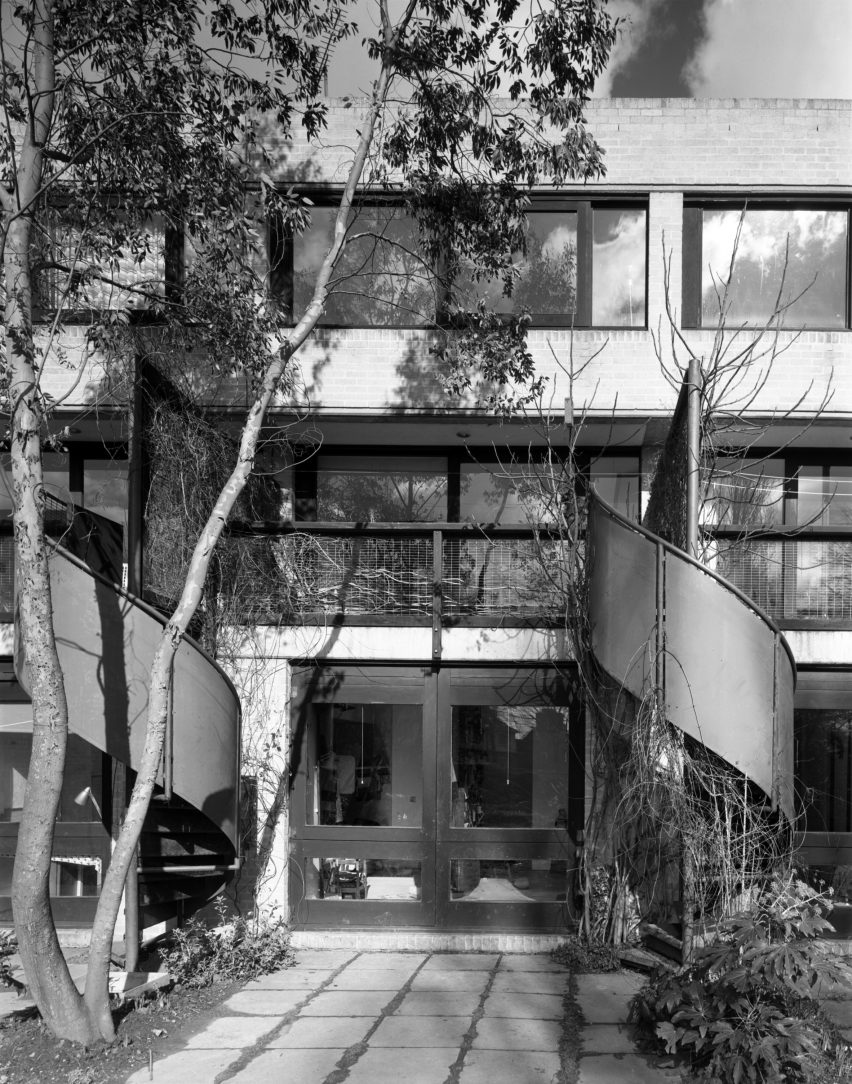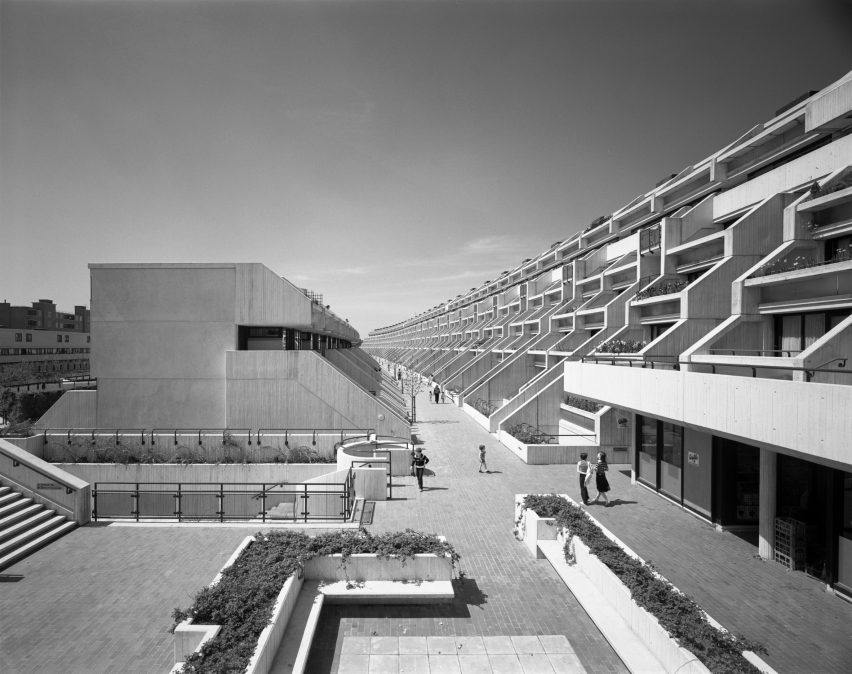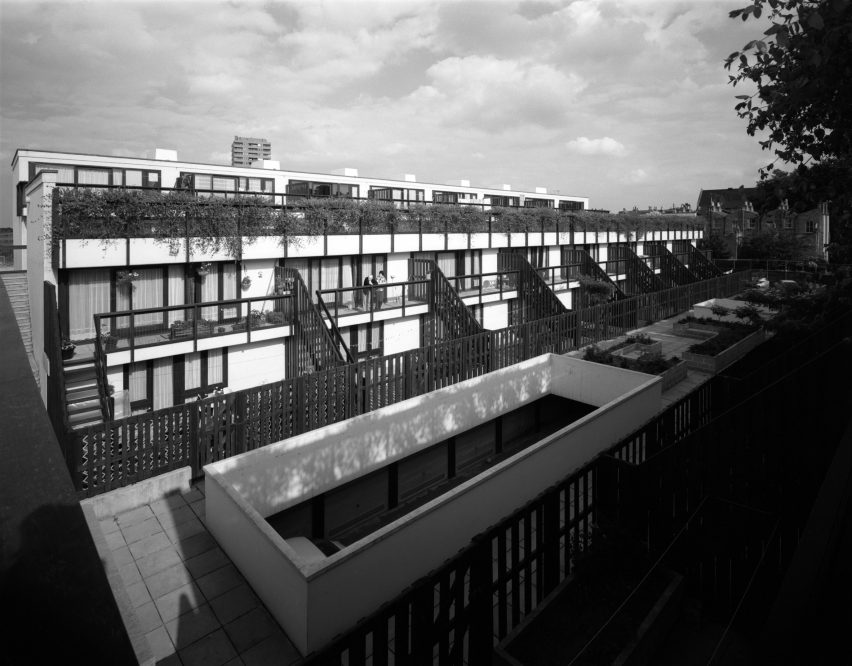Neave Brown - Wikipedia
In his eighties, he's just won a prize for his council housing from the 196os and 70s:
Neave Brown wins Royal Gold Medal for architecture
 |
Overdue recognition for Mrs Brown's boy
Housing represents arguably the most important piece of architecture its users will experience. Yet we have to go back to 1987 when Byker estate architect Ralph Erskine won the RIBA Royal Gold Medal for the last time its recipient was so closely associated with housing. This year’s winner, Neave Brown, designed a series of council housing projects in the 60s and 70s, many for the London Borough of Camden, which
He is famously the only architect to have all his UK buildings listed, but when he was creating his schemes they were widely derided. As architectural historian Mark Swenarton points out in his medal citation, the orthodoxy then was for ‘slabs set in empty space, stemming from the ‘death of the street’ proclaimed by Le Corbusier’ while in contrast Brown ‘created a model in which connections were based on the street’. Fittingly, his nomination was backed by considerable support from residents of his most famous project, the Alexandra Road estate. Brown is himself a rare example of an architect living in the development they designed, his home being on his own Dunboyne Estate. Sadly Brown’s poor health means the 88-year-old will receive his medal at a private ceremony on Monday rather than the full hoopla event that usually takes place. It seems a pity the medal was not awarded earlier. But the RIBA is clearly seeking to make a clear statement about social housing through its choice, with president Ben Derbyshire urging the government to look to Brown’s ‘housing ideals and innovative architecture’ in solving the present housing crisis. |
Tributes to Neave Brown: 'An architect who designed the setting for social life and relationships' | News | Architects Journal
The Dezeen magazine looks at his work:

Key housing projects by 2018 Royal Gold Medallist Neave Brown
Lauded as a "pioneer of quality public housing", the 2018 Royal Gold Medallist Neave Brown is best known for his housing schemes in north London. Here's a look at five of his key residential projects at home and abroad.
Brown, 88, was named the 2018 recipient of the 2018 Royal Gold Medal by the Royal Institute of British Architects (RIBA) yesterday, recognising his lifelong commitment to architecture.
Brown studied at the Architectural Association in London before going on to work for the architects departments at Camden Council, and latterly closed his practice to take an art degree at the City and Guilds of London School of Art.
His low-rise by high-density housing in the London borough of Camden – particularly his Alexandra Road estate – are widely recognised, but Brown also went on to design housing in both the Netherlands and Italy.
Brown is currently the only living architect to have all of his projects in the UK listed by public body Historic England. His receipt of the Royal Gold Medal comes at a time when the fate of post-war buildings is firmly in the spotlight.
Sitting on the board that selected him for the award was architect Ted Cullinan, whose now-demolished Horder House has just been included on a list of lost treasures by preservation body the Twentieth Century Society.

Winscombe Street, London (1965)
Neave Brown designed 22-32 Winscombe Street, a row of five terraced homes in the Dartmouth Park area of north London, for himself and the families of his friends.
The private co-housing scheme was funded in its entirely from a loan from Camden Council, and was to become the prototype for his larger public housing estates he designed.
Brown lived in at Winscombe Street for 40 years before moving to his Fleet Road development.

Alexandra Road estate, London (1978)
Located near Swiss Cottage, the Alexandra Road estate comprises 500 homes, as well as numerous community facilities include shops, a community centre, a recently renovated school for children with special needs.
The striking stepped formation of the blocks rises to just eight storeys, and walkways run through the tiers of the scheme.
RIBA president Ben Derbyshire holds the project up as an example for what social housing could be today.
"The government must empower and then encourage every single council across the country to build a new generation of well-designed, affordable and sustainable homes that meet the needs of the millions of people currently failed by the housing market," he said, announcing Brown as the winner of the medal.

Dunboyne Road Estate, Fleet Road, London, England (1975)
Dunboyne Road estate near Gospel Oak was Brown's first housing project for Camden. Brown lived in the estate following a 40-year stint at his Winscombe Street design.
Each of 71 maisonettes and apartments have a private terrace and communal garden, and are housed in blocks that flank a central pedestrian walkway. There is also a shop and a studio onsite.
.
.
.

No comments:
Post a Comment